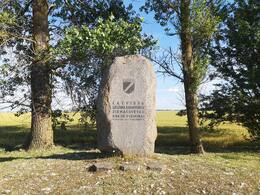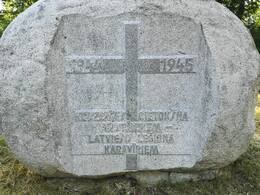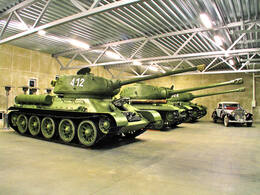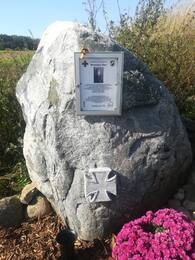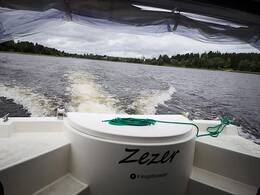Tell me about the sunken equipment
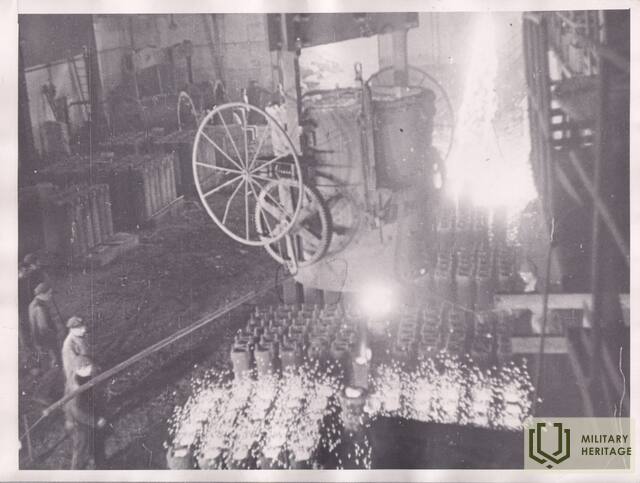
Numerous stories of machinery sinking in swamps and lakes have survived in Latvia. Few of them are true.
The footage in it shows how a group of enthusiasts dig out a legendary soviet T 34 tank sunk in Pienava bog near Dzukste, Latvia at December 1944. By following stories and legends they found two tanks, one of them you can see in the video. After several hard days the tank was finally out. It had 43 cannon shells, machinegun`s discs and hand grenades inside but no remains of the crew. What`s most surprising - after several weeks of cleaning and minor repairs they got the engine working after more than 50 years spent in bog, as you can see in the end of the video. The tank as far as I managed to find out is now exposed in Museum of military vehicles near Daugavpils, Latvia
Rescue of a tank T 34 out of the Pienava bog, Latvia - YouTube
Related timeline
Related objects
Monument to Victims of the Christmas Battles in Pienava
Located in Tukums region, on the side of the A9 highway, approximately a kilometer after Pienava in the direction of Liepāja.
The memorial is located on the site of the Third Battle of Courland, or the Christmas Battle, in 1944. At the end of World War II, a unique situation had developed in the territory of Latvia. There were German army forces in Courland, which the Red Army tried to eliminate or prevent from being involved in battles in East Prussia or around Berlin. “Courland Fortress” is the most common term used to describe the battles in Courland from 1944 to 1945. The “Courland Battle” was the German army’s military operations to repel the Red Army’s massive attacks. Latvian legionnaires also actively participated in the battles in Courland.
Today, you can visit the memorial site. The open fields of the area, without the oldest buildings, are witnesses to the war.
Memorial Stone to Defenders of the Kurzeme Fortification
Located in Tukums region, on the side of the A9 highway, 500 m from the turnoff to Lesteni in the direction of Riga.
The memorial was established in 1991 near the Rumbu houses, which were the scene of active hostilities. It is a tribute to the defenders of the “Courland Fortress” who fought against the Red Army in World War II. The battles were significant because they temporarily halted the Red Army’s complete occupation of Latvia. Approximately 300,000 Latvians emigrated to escape the crimes committed against civilians by the Soviet regime.
At the end of World War II, a peculiar situation had developed in the territory of Latvia. German army forces were located in Courland, which the Red Army tried to eliminate or prevent from being involved in battles in East Prussia or around Berlin. “Courland Fortress” is the most common term used to describe the hostilities in Courland from 1944 to 1945. “The Battle of Courland” was the German army’s fight to repel the Red Army’s massive attacks. The Courland Fortress ceased to exist shortly after Germany’s capitulation.
Today, you can visit the memorial and resting place, which was popular among Latvian legionnaires since the restoration of Latvia's independence.
The Museum of Military Vehicles in Svente
The museum is located next to the hotel “Sventes Muiža” (Svente Manor).
The exhibition of the museum is unique since the objects in the collection were found on former battlefields. Soviet military equipment has been skilfully restored – some exhibits can even be started up and used for demonstrations. The tanks on display are believed to be rare exhibits on a European scale. The museum displays:
• Soviet tanks – the T-34 medium tank and the IS-2 and IS-2M heavy tanks, which are named after Stalin;
• BRDM-2 and BRDM-1 armoured airborne reconnaissance vehicles;
• military vehicles Jeep Willys and GAZ-67;
• self-propelled guns;
• cannons and other pieces of equipment.
Kurzeme fortress museum in Zante
Will be open from May 1st.
Memorial site for Hermann Faul
It is located at the crossroads of rural roads, turning off the road leading from Pienava to Džūkste.
Memorial to H. Faul, and to the nine German and Latvian soldiers who fell in the battle of 27 December 1944 (probably blown up by a direct hit from a cannon shell) and who are presumed missing since then, as no remains, documents or other evidence of their identity have been found.
Boat trip in Ciecere lake by the boat “Zezer”
During the ride with the recreational boat “Zezer” along Lake Ciecere near Brocēni you can listen to the audio guide and captain's stories about Lake Ciecere and the city of Brocēni on its shores, World War II events near Lake Ciecere, trenches on both sides of the lake and the Oak Island, as well as the tank route running along an observation tower and the tank that is said to be sunk in the lake. The audio guide is available in Latvian, Lithuanian, English, and Russian languages. The ride takes 1 hour 15 min.





